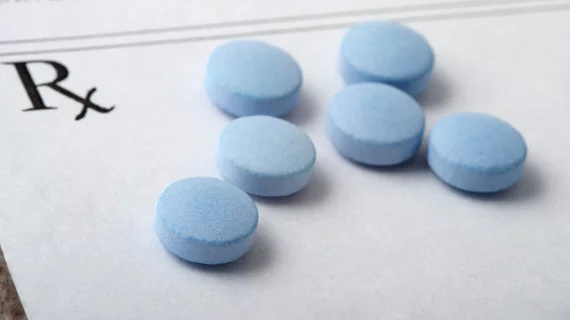Copayment vouchers for P2Y12 inhibitors modestly improved the likelihood that patients would continue taking the guideline-recommended medications for one year after myocardial infarction, according to a study published in JAMA. However, patients supplied with this financial assistance didn’t see a subsequent improvement in clinical outcomes.
Both European and American guidelines recommend treatment with P2Y12 inhibitors for one year after MI, but between 30 and 60 percent of patients in the U.S. don’t complete the suggested one-year course of therapy, previous research showed. Because medication costs have been cited as one reason for this lack of follow-through, lead author Tracy Y. Wang, MD, MHS, MSc, and colleagues hypothesized copayment vouchers would increase the proportion of patients who remained on P2Y12 inhibitors and also improve one-year health outcomes.
It turns out they were only partially right.
More than 300 hospitals were randomized to either supply their acute MI patients with copayment vouchers—which completely eliminated the out-of-pocket costs associated with the medicines—or not. The copayments covered either generic clopidogrel or brand-name ticagrelor, with the median value of the vouchers reaching $137 for a 30-day supply.
Among 10,102 patients who were discharged from the hospital with a prescription for one of those P2Y12 inhibitors, the self-reported medication persistence through one year was 87 percent for those provided vouchers and 83.8 percent for those without vouchers.
But the improved adherence didn’t have a significant impact on major adverse cardiovascular events (MACE) at one year; 10.2 percent of those given vouchers died or had a stroke or recurrent MI versus 10.6 percent of participants in the control group.
Wang et al. said there are several potential explanations for why the copayment assistance didn’t result in significant improvements in clinical outcomes:
- 28 percent of patients in the intervention group never used the provided vouchers.
- The vouchers only targeted one medication class, whereas other drugs have also shown the ability to reduce MACE following MI.
- Physicians stated an intention to treat their patients with P2Y12 inhibitors in only two-thirds of patients, so some of the medication discontinuation could be attributed to physician choice.
- Ticagrelor uptake in the control group (32.6 percent) was nearly double that observed in a recent analysis of a U.S. registry, and this better-than-expected treatment in the control group may have shrunk the gap between groups in terms of outcomes.
“These results suggest that multifactor interventions are likely needed to achieve population-level health benefits,” wrote Wang, with Duke Clinical Research Institute in Durham, North Carolina, and co-authors. “Co-payment reductions may be considered part of broader-scale strategies to incentivize risk-based treatment selection and promote adherence to guideline-recommended therapies.”
The researchers also found patients tended to over-report their persistence with the medications, which was expected based on previous studies. But even when they used a database of pharmacy fills to define persistence, patients given the copayment vouchers were more likely to stick with the drugs for one year (55 percent versus 46 percent in the usual care group).
Importantly, the vouchers also appeared to influence physicians’ prescribing practices. Clinicians in the intervention group were more likely to report an intention to treat patients for one year with P2Y12 inhibitors (76.7 percent versus 57.8 percent) and were more likely to prescribe ticagrelor (56.9 percent versus 32.4 percent), which has been shown in randomized trials to reduce MACE to a greater extent than clopidogrel.
“For clinicians, eliminating co-payment differences between brand-name and generic P2Y12 inhibitors may affect prescribing practices and improve guideline adherence,” Wang and colleagues wrote.
Wang et al. and the authors of a related editorial found it concerning that 28 percent of patients in the intervention group never used their vouchers, and suggested the same factors that limit medication adherence in general might contribute to voucher nonuse.
“Patients who used the voucher were more likely to be male, white, employed with private insurance, have a higher income, and have fewer comorbidities, suggesting that perhaps patients who could have benefitted the most from the voucher were the ones who did not use it,” wrote Cynthia A. Jackevicius, PharmD, MSc, and Dennis T. Ko, MD, MSc, in the editorial. “Perhaps the co-pay is not the actual barrier but instead is a marker for a patient who is at risk of nonadherence and who needs more than simply financial relief.”
Jackevicius and Ko said it could be useful to “diagnose” a patient’s specific nonadherence type and come up with “multipronged targeted interventions” to address those personal barriers.
“Even though a one-size-fits-all approach, such as providing a co-payment voucher, is much easier for clinicians in the overburdened health care system, without consideration of a patient’s specific needs and interests, it will be difficult to effectively optimize the use of evidence-based therapies that have been proven to reduce the chance of adverse patient-important consequences,” they wrote.

